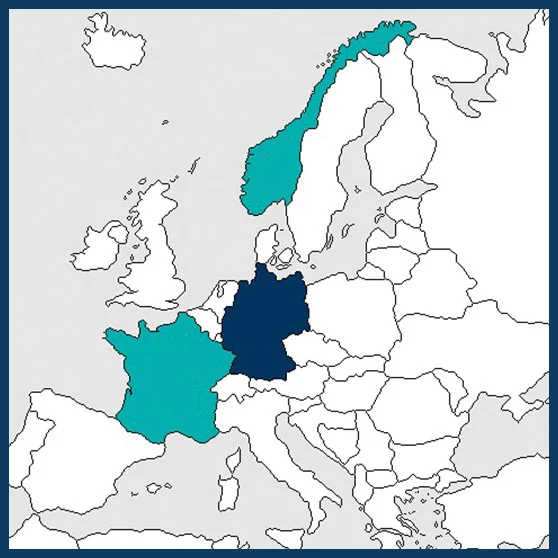03-2017 to 02-2020
€ 502,420
Prof. Daniel Hering
daniel.hering@uni-due.de
University of Duisburg-Essen, Essen, GERMANY (Coordinator)
Institut National de Recherche en Sciences et Technologies pour l’Environnement et l’Agrictulture, Lyon-Villeurbane, FRANCE
Leibniz-Institute of Freshwater Ecology and Inland Fisheries, Berlin, GERMANY
Norwegian University of Life Sciences, Aas, NORWAY

Woody riparian buffer strips along rivers have widely been used mainly to reduce nutrient and fine sediment input from agricultural areas but potentially offer many more ecosystem services (e.g. habitat provision increasing biodiversity, shading and temperature regulation, mitigating climate change effects). Moreover, their beneficial effects potentially depend on their spatial arrangement, such as frag- mentation, and woody buffers may provide migration corridors and connect near- natural sites in a green infrastructure network.
The Oscar project will synthesise the various pieces of knowledge on woody buffer effects, complement these with new analyses on biodiversity and ecosystem functions, consider their spatial arrangement and function as migration corridor, and, based on this, provide rules and tools to optimise the overall effect of woody buffers and policy recommendations on the strategic and targeted implementation of woody buffers at national and EU-level.
The main activities in Oscar will be:
• Synthesise the general effects of single woody buffers: Review and complementary studies on the effects of single woody buffers on ecosystem functions (e.g. nutrient and sediment retention, temperature) and biodiversity (i.e. species diversity of various organism groups – aquatic and riparian).
• Investigate the effects of woody buffers in a green infrastructure network: Investigate and assess the effect of the spatial arrangement of woody buffers on ecosystem functions and biodiversity as well as their role as migration corridors (based on large monitoring datasets).
• Integrated assessment of woody buffer effects: Assessment of the ecosystem services (ES) (e.g. regulating services like nutrient retention, provisioning services like provision of food, etc.) effects on biodiversity, and role as migration corridor in four case-study catchments based on the knowledge derived in the first two steps. Objectives are threefold: Assess the potential use in river resto- ration under real-world conditions, test the widely stated assumption that biodiversity goes together with high ES, and provide a baseline scenario for the next step.
• Optimise the configuration of woody buffers: Assess the effect of different woody buffer management and climate change scenarios in the four case-study catchments on ES, biodiversity, and their function as migration corridors. The objective is to identify realistic woody buffer configurations with a high overall effect.
• Knowledge brokering: Provide and disseminate knowledge rules, a GIS-based multi-criteria decision analysis tool to assess the effect of woody buffers and provide policy recommendations on woody buffer establishment.
Beside the involvement of local stakeholders in the case-study catchments, the project’s research plan and results will be presented and discussed with relevant working groups at national (e.g. German LAWA, French ONEMA) and EU level (e.g. ECOSTAT), especially the relevance of woody buffers for the European Bio- diversity Strategy, the implementation of the WFD and establishment of funding schemes under the Common Agricultural Policy (CAP) and its current ‘greening’ policy reform.